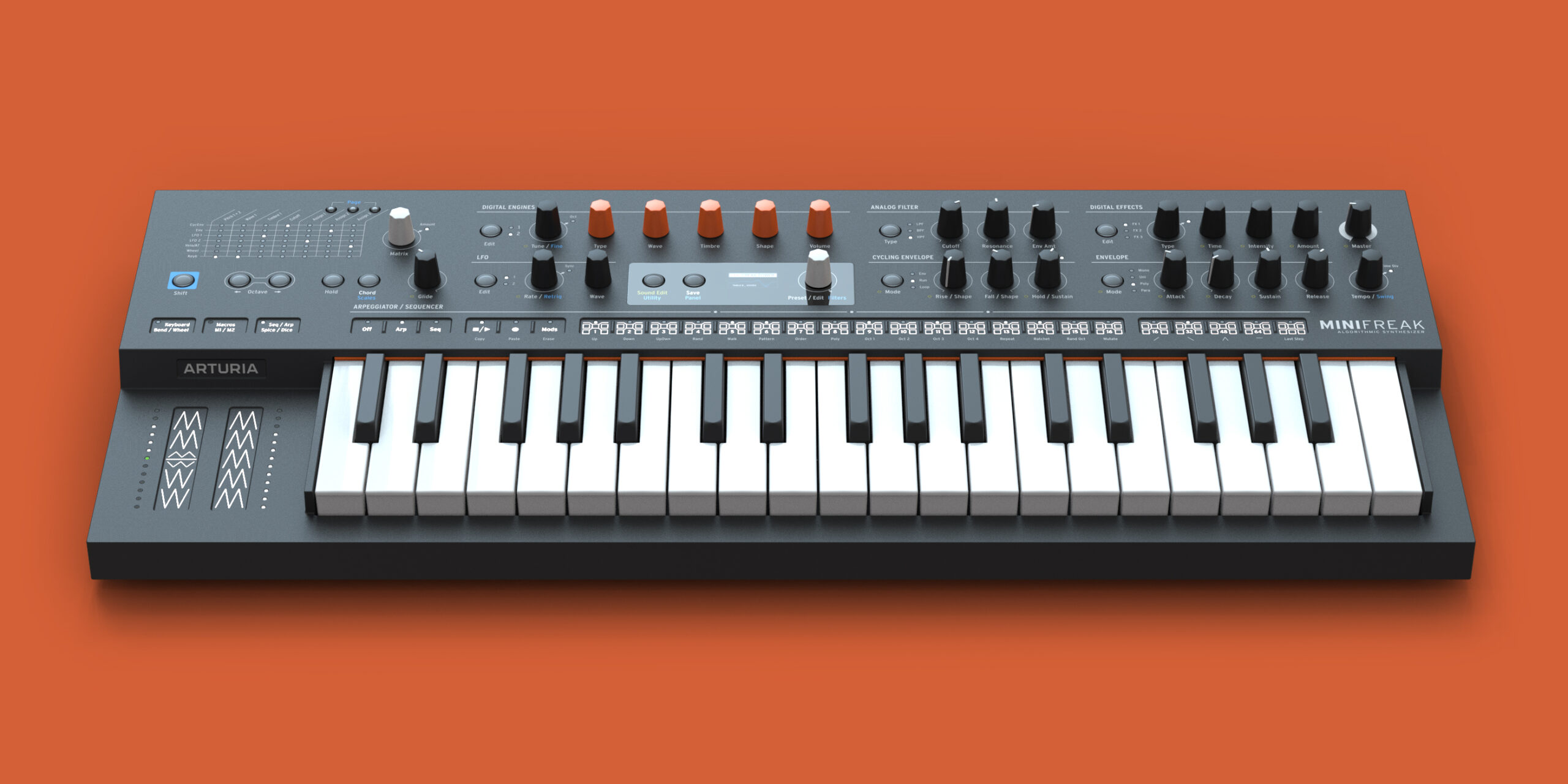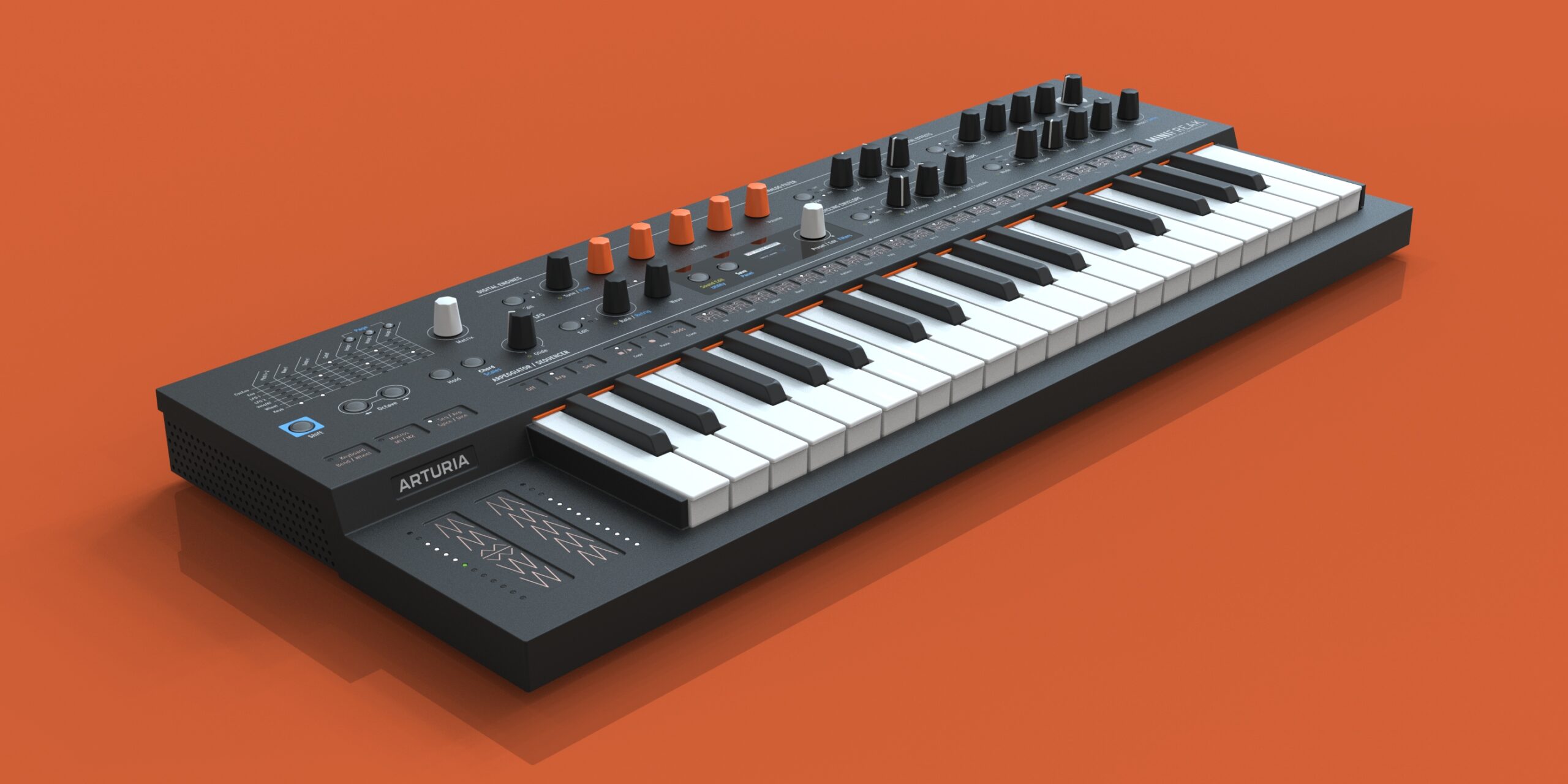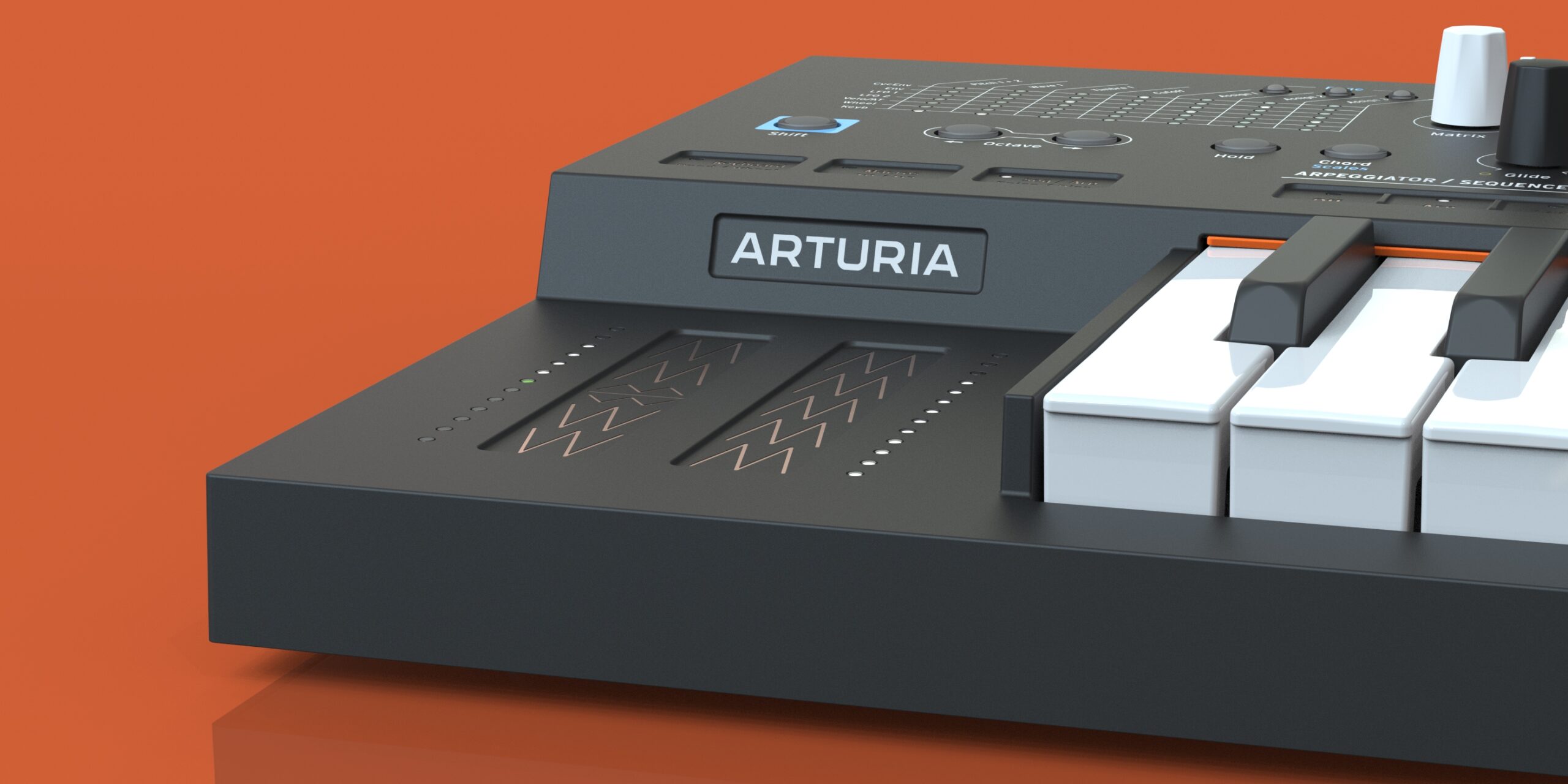
Arturia MiniFreak
Our design journey started in September 2020, when Arturia's project manager Sebastian Rochard approached us with the basic concept of the Minifreak. Sebastian and his team had already come up with some great user-interface ideas for this new Freak, and much of this is reflected in the product that was recently unveiled to the public.
Our task was to pack this somewhat more detailed and more powerful approach to the new Freak spawn into a suitable housing. Of course, the design language found with the MicroFreak served as a basis - the design should perfectly underline the cheekiness and daring of this instrument.


In the first design round, we drew - as usual - several design variants, whereby we orientated ourselves very strongly on the MicroFreak DNA with one of the 3 basic designs. However, I was primarily thinking of a design language that, although it packed the freakiness in some way, would give this polyphonic and extremely powerful beast its own identity. So we worked on our 3D system on a design language whose origin lies in the aesthetics of the beat organs from the 60s.
The keyboard is not formally integrated as an independent element, but is enthroned in front of the somewhat raised synthesiser panel. The waterfall style of the keyboard (the keys are flattened at the front - like a Hammond organ keyboard) emphasises the blocky character of the design. To the left of the keyboard are the pitch and mod strips - their graphic design is 100% based on the MicroFreak design.
The cabinet construction is based on a solid metal shell into which we have integrated a distinctive perforated structure for the exhaust air of the heat-generating electronic components. These contribute to the overall very technical - almost overdrawn steampunk look of the instrument.
The design perfectly complements the instrument's cheeky, exuberant synthesis engine and invites uninhibited experimentation.



